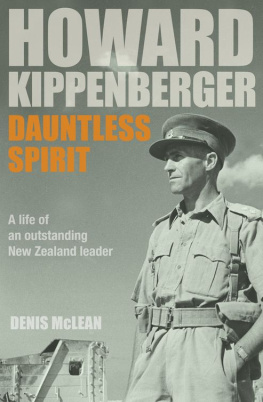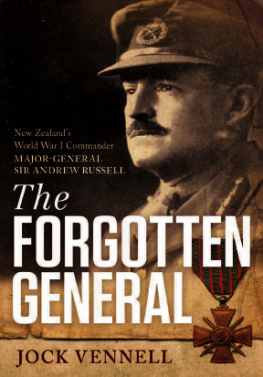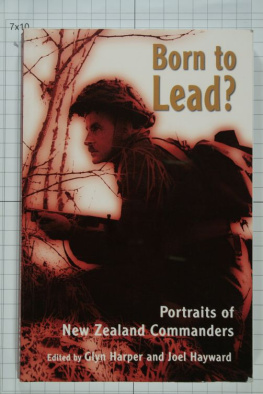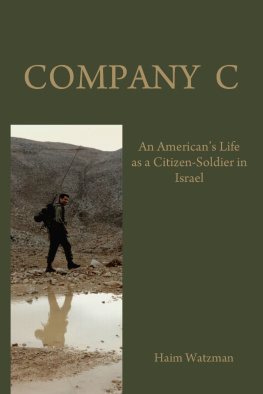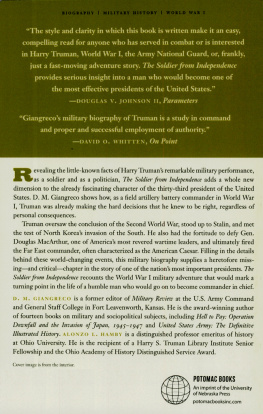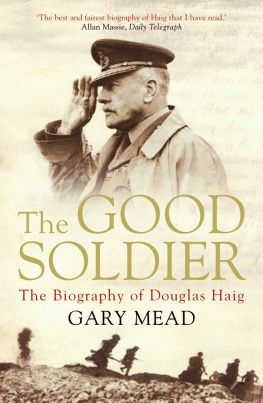Denis McLean was, in a former life, a senior public servant, Secretary of Defence and Ambassador to the United States. As an author he has pursued an interest in the shaping of national presumptions and ideals, and in the impact of nationalism.
Now is the hour, Aeneas, for the dauntless spirit now for the stout heart.
ADC: Aide-de-Camp, personal staff officer
ADS: Advanced Dressing Station
Army Ranks:
Other Ranks (ORs): Private, Lance Corporal, Corporal, Sergeant, Colour Sergeant, Sergeant-Major (WO2), Regimental Sergeant Major (WO1)
Officers (Commissioned Ranks): 2nd Lieutenant, Lieutenant, Captain, Major, Lieutenant Colonel, Colonel, Brigadier, Major General, Lieutenant General, General, Field Marshal
Army Formations:
(NB: A guide only. New Zealand formations in the First World War differed in structure and size from those adopted in the Second World War.)
Section (Sec): c.10 soldiers
Platoon (Pl): 3 sections, c.30 soldiers
Rifle Company (Coy): 3 platoons, c.100 infantry plus HQ, signals etc.
Battalion (Bn):
4 rifle companies and the HQ Company (Battalion HQ, Intelligence Section, Signals, Anti-tank and Anti-aircraft, Mortar, Pioneer and Transport Platoons; Quartermaster and Medical Section) c.800 soldiers
Brigade (Bde): 34 battalions 3000 plus soldiers
Division (Div): 34 brigades c.1719,000 infantry along with cavalry, artillery, anti-aircraft, engineers, medical, tanks and transport units
Corps: 23 divisions
Army: 2 or more corps
battery: an artillery unit of 3 or 4 troops of guns
box: an all-round defensive position used for a time in Western Desert campaigns
Bren gun: a British light automatic weapon
Bren gun carrier: a light armoured tracked vehicle equipped to carry Bren guns and widely used for reconnaissance and for transport over difficult terrain
cavalry: in modern times the name adopted by reconnaissance/light armoured units
CB: Companion of the Order of the Bath
CBE: Commander of the Order of the British Empire
CMG: Commander of the Order of St Michael and St George
CCS: Casualty clearing station
CDS: Chief of Defence Staff, commander of all national defence forces
CGS: Chief of General Staff (Head of the Army)
C-in-C (Commander-in-Chief): overall commander in the region
CO: Commanding Officer
DCM: Distinguished Conduct Medal, gallantry award for ORs
D-Day: date fixed for commencement of an operation
deploy: to move units into defensive or offensive positions; to spread out troops for action
DSO: Distinguished Service Order, officers award for outstanding courage and battlefield performance
GOC: General Officer Commanding
group: an all-arms formation (inclusive of guns, armour etc.) under separate command intended for independent operations
H-hour: time set for launch of an operation
HQ: headquarters
HMS: His Majestys Ship
IO: Intelligence Officer
Jock column: Two infantry companies a battery of artillery, anti-tank troop etc. to be brought together for independent operations in the Western Desert (A concept advanced by Brigadier Jock Campbell, which Kip thought not serious)
KBE: Knight Commander of the Order of the British Empire
LMG: light machine gun
LRDG: Long Range Desert Group
Luftwaffe: German Air Force
Mersa/marsa: Arabic place name for a fort
MC: Military Cross, gallantry award for officers of Captain rank or below
MDS: Medical Dressing Station
NCO: Non-Commissioned Officer
2 NZ Div: Second New Zealand Division (first being the First World War), the principal New Zealand Army fighting force of the campaigns in the Middle East and Italy
2 NZEF: Second New Zealand Expeditionary Force (first being the First World War), includes 2nd NZ Division plus all support personnel
O Group: Orders Group, for transmission of instructions to subordinate commanders
OCTU: Officer Cadet Training Unit
OP: Observation Post
POW: prisoner of war
QMG: Quartermaster-General
RAF: Royal Air Force
recce: reconnaissance, to reconnoitre
Regiment: In the New Zealand Army the term has been applied to regional as well as specialist units: Canterbury Regiment (infantry); the 16th Field Regiment (medium artillery); and 20th Armoured Regiment (heavy tanks). (The 1st Bn the Canterbury Regiment became the 20th (Infantry) Battalion at the outbreak of the Second World War and then the 20th Armoured Regiment when it was converted to the tank role
Reinforcements: successive drafts of troops sent to maintain force levels following attrition from casualties, illness etc.
RN: Royal Navy
Sidi: title of honour given to Moslem notables
Spandau: German light machine gun
The Div: familiar term for the 2nd NZ Division
Troop: a basic cavalry, artillery or armoured unit
VC: Victoria Cross, the highest award for gallantry
Wadi: Arabic for watercourse (usually dry)
WO: Warrant Officer (senior NCO)

